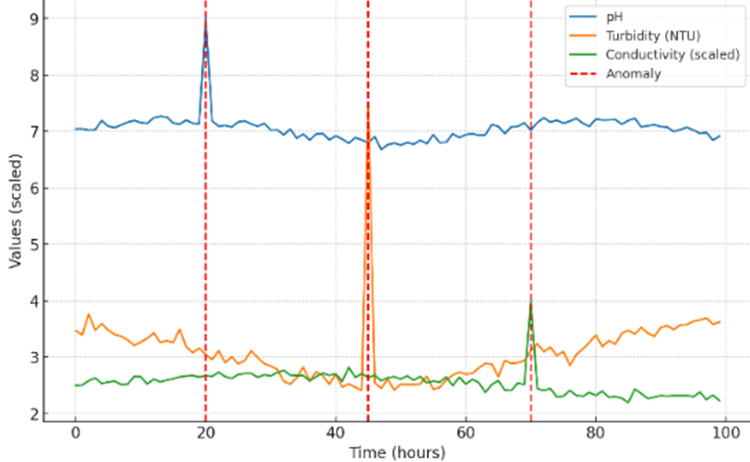Integrating Anomaly Detection and Predictive Modeling for Real-Time Water Quality Monitoring: A Data-Driven Approach for Sustainable Resource Management
Keywords:
Water Quality, Anomaly Detection, Predictive Modeling, ARIMA, LSTM, Hybrid Modeling, Sustainable Water ManagementAbstract
Ensuring safe and sustainable water resources requires timely detection of contamination events and accurate forecasting of water quality trends. This study presents a data-driven framework that integrates anomaly detection with predictive modeling to enhance real-time water quality monitoring. Using publicly available datasets supplemented with hypothetical scenarios, key water quality parameters—including pH, turbidity, and conductivity—were analyzed over a six-month period. Advanced anomaly detection methods, such as the Isolation Forest algorithm, were employed to identify abnormal patterns, while predictive models including ARIMA, Long Short-Term Memory (LSTM), and a hybrid ARIMA-LSTM model were applied to forecast future trends. The results revealed that the hybrid ARIMA-LSTM model outperformed traditional approaches, achieving the lowest mean absolute error (MAE = 0.19) and root mean square error (RMSE = 0.28), demonstrating its robustness in handling non-linear and time-dependent fluctuations. Anomalies corresponding to extreme turbidity spikes and sudden pH deviations were successfully detected, highlighting the framework’s potential as an early warning system for contamination events. Graphical analyses further illustrated model performance and anomaly detection outcomes, confirming the applicability of artificial intelligence (AI) techniques in environmental monitoring. This research contributes to advancing sustainable water management by integrating real-time monitoring, anomaly detection, and predictive modeling. The proposed system not only improves accuracy and reliability in water quality assessment but also aligns with the Sustainable Development Goals (SDGs), particularly SDG 6 on clean water and sanitation. While the study demonstrates promising outcomes, future work should focus on integrating additional heterogeneous data sources, field deployment, and improving model interpretability for decision-making.


